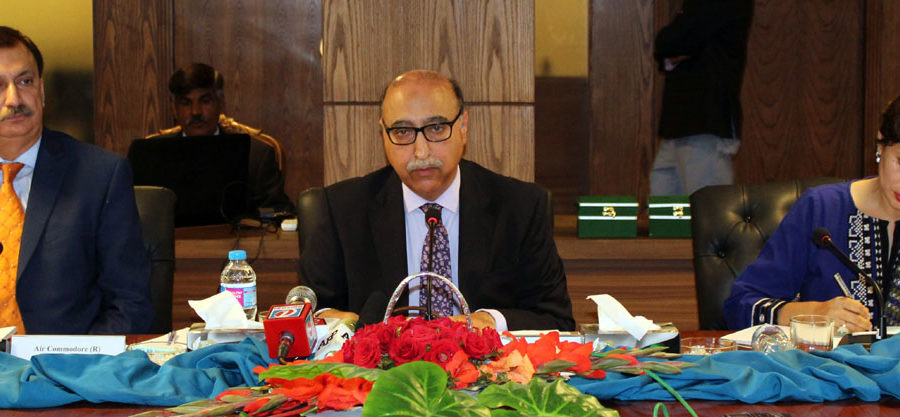Indian moving away from credible minimum deterrence policy

ISLAMABAD, FEB 28 (DNA) -The Indian Armed Forces Joint Doctrine 2017 explicitly acknowledges the use of “surgical strikes” as a formal part of India’s retaliatory toolkit, validates the existence of India’s Cold Start Doctrine and clearly highlights a shift in nuclear strategy by indicating movement away from “Credible Minimum Deterrence” (CMD) to “Credible Deterrence” (CD).
No longer are the lines “gray” in terms of what India’shegemonic and dangerous designs for the region since the document is indicative that New Delhi sees both China and Pakistan as direct military threats.
It also offers a new picture of how India separates the control of its nuclear weapons between military and civilian authorities. This was shared by the speakers at the Panel Discussion on “Indian Armed Forces Joint Doctrine 2017: A Critical Appraisal” organised by the Islamabad Policy Research Institute (IPRI) here in Islamabad today.
Welcoming the participantsAmbassador (R) Abdul Basit, President of IPRI said that despite the grave importance of reviewing the Joint Doctrine Indian Armed Forces (JDIAF), not much attention has been given to the subject in Pakistan.
He shared that given recent debates on potential shifts in Indian nuclear strategy, the presentation of India’s nuclear strategy in the Doctrine is alarming since it has opted to use the terms “Credible Deterrence” instead of “Credible Minimum Deterrence”.
He pointed out that as a reflection of India’s future political and military ambitions, the Doctrine will have long-term implications for Pakistan’s threat perceptions and force posturing, and calls for serious contemplation by the Government.
Discussing the “Potential Shifts in Indian Nuclear Strategy: Challenges for Nuclear Deterrence in South Asia”, Senior Defence Analyst Air Commodore (R) Khalid Banurihighlighted that the Doctrine’s focus on determining and/or preventing conflict through a process of Credible Deterrence, coercive diplomacy and punitive destruction, disruption and constraint is alarming, and warned that while not mentioning “minimum” in the credible deterrence formulation is very problematic, it is also unclear what precise changes are being envisioned by India. He said that the document’s language was highly ambiguous and posits more gaps especially in the absence of an autonomous office of Indian Chairman Joint Chief of Staff.
He said that this Doctrine should be viewed in the broader context of the wave of ultra-nationalism that is sweeping the globe and is being spearheaded by Modi in South Asia. Air CmdrBanuricautioned that the Doctrine goes beyond a focus on traditional military imperatives since it portends to use diplomatic isolation and economic sanctions backed by projection of military force for what India calls “maintaining peace through show of force
Ms Salma Malik, Assistant Professor, DSS Department, Quaid-i-Azam University discussed asymmetric military buildup in South Asia and options for Pakistan. She was of the view that this new Doctrine has had received mixed reactions in India since many view it as an ambiguous, clutterous document that has moreunanswered questions and obvious incongruities. She said that the document leaves no confusion regarding India’s malicious designs – a country which was the world’s largest importer of arms between 2012 and 2016, and the world’s 2nd largest military force.
Pakistan’s political and military leaders need to be cognizant that this Doctrine is not confined to physical conflict alone, rather factors in Hybrid Warfare, including supporting chaos, psychological and media warfare, cyber warfare, and economic warfare. She cautioned that India is progressing from military power, soft power to smart power and is making these moves in leaps and bounds, supported by its growing economic might.
In the Question and Answer session, the audience of foreign dignitaries, former ambassadors, defence and strategic studies students and media was informed that in 2016-17, the Indian defence sector received USD 51 billion, 2.25 per cent of GDP.
The United States spends 4.0 per cent of its GDP on defence, China 2.5 per cent, and Pakistan 3.5 per cent.
Participants agreed that India is trying to harm Pakistan through kinetic and non-kinetic means, and the Government needs to stop its internal squabbles and focus on developing the country’s national strength by virtue of strong and resilient armed forces, robust defence production infrastructure, and by developing an indigenous scientific research and development culture.
A strong economy hinges on strong politics, and strong civil-military relations, Pakistan needs to cater to these facets holistically rather than see them in isolation for its own national interests and national security, it was stressed.=DNA
===============
Related News

Pakistan Eyes Maritime Growth: 90% of Global Trade at Stake
HONG KONG: NOV 18 (DNA):Federal Minister for Maritime Affairs, Qaiser Ahmed Sheikh, participated in theRead More

Constitutional bench rejects plea to declare candidates successful with 50% votes
ISLAMABAD, NOV 18 (DNA): The Supreme Court’s seven-member constitutional bench on Monday commenced hearing pendingRead More


Comments are Closed